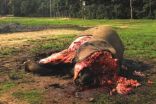(Press-News.org) A new study disputes the effectiveness of mortality as a measure of the quality of care provided by hospitals to stroke patients. The paper – which was simultaneously presented today at the International Stroke Conference in San Diego and published in the journal Stroke – found that use of do-not-resuscitate (DNR) orders differ widely between hospitals and that this variation can significantly skew a hospital's quality "ranking" based on mortality.
"With mortality increasingly being used as a marker for the quality of care provided to stroke patients, it is essential that we understand the impact of decisions made by physicians and families to limit or withhold care," said Adam G. Kelly, M.D., a neurologist with the University of Rochester School of Medicine and Dentistry and chief of Neurology at Highland Hospital. "It is clear from our research that not only is the use of DNRs all over the map, but that this variation can affect efforts to assess quality of care."
The national movement toward measuring and publically reporting quality of care data and – in the case of the federal government – linking this information to payment has spurred a discussion in the medical community over which metrics accurately reflect how well an institution is doing.
One such example in the use of 30-day risk adjusted mortality for stroke. The measure, which indicates whether a stroke victim died within a month of being admitted to a hospital, has been used by organizations such as Healthgrades as one of the primary indicators of a hospital's quality of stroke care. Furthermore, the Centers for Medicare and Medicaid Services is in the process of developing a reporting model to measure stroke care that may also include 30-day mortality.
For some time physicians have questioned whether or not mortality is an appropriate measure of stroke care. DNRs are often put in place to limit some life-extending interventions for patients who have had a severe stroke. However, mortality statistics do not distinguish between an individual who has died because of poor or unsafe care versus someone who died because a conscious decision was made to withhold invasive or heroic measures.
"Stroke may be different from other conditions that use mortality as a metric in many important ways," said Kelly. "Because the condition can result in severe disability, many patients and their families opt against high-intensity care. This implies that early mortality after a stroke is not always the worst outcome from a patient's perspective."
Unfortunately, the circumstance in which a DNR is utilized is not always clear cut. Some DNRs are in place before the individuals suffer a stroke, however, others may reflect pessimism on the part of providers and families regarding the severity of the stroke and potential long-term outcome. In this situation, early limits on interventions could impair post-stroke recovery.
While the intention in both cases is to prevent needless suffering and severe disability, the driving force behind these decisions can vary. While data sources are not specific on this point, use of DNRs could be influenced by hospital-specific processes or cultures, the inclinations of specific providers, or local and regional variability in patient preference.
"DNRs, when properly implemented, are an important component of providing patient-centered care," said Kelly. "However, finding the right balance that avoids arriving at the decision to limit interventions too quickly or continuing on a course of aggressive care that is unlikely to change the outcome can be difficult to achieve, particularly in institutions that do not specialize in stroke care."
The researchers examined data from 355 hospitals in California over the six year period from 2005 to 2011. The team chose California because the state was one of only a handful that maintains records detailed enough to conduct the necessary analysis. In total, the study looked at 252,368 stroke cases.
The researchers found an extremely wide range of variation in the use of early DNRs (those placed within the first 24 hours of admission), with the lowest group of hospitals only using DNRs in an average of 2.2 percent of stroke cases, while the highest group used the orders an average of 23.2 percent of the time – a ten-fold difference. As would be expected, the hospitals with a greater percentage of DNRs generally had higher mortality rates.
The team went through and projected mortality at each hospital based on the severity of stroke, the age of the patient, and other known risk factors. Mortality was calculated with and without the expected impact from higher use of early DNR orders.
They then plotted each hospital's rank in mortality both with and without DNRs and found that there was often a wide disagreement between the two rankings. Reporting of mortality and other quality measures is often done to help identify lower quality or under-performing hospitals, and the authors categorized the bottom five percent of hospitals as being poor performers in this analysis.
As many as 28 percent of the hospitals that were ranking as poor performers in stroke care when DNRs were not accounted for were reclassified to average performing when DNRs were taken into account. Conversely, other hospitals that were ranked as average performers were reclassified to low performing once DNRs were accounted for.
"We have this factor – early DNR utilization – that varies widely among hospitals and clearly impacts hospital mortality and rankings based on mortality, yet we lack the ability to understand when these early DNRs are used in a high quality, patient-centered fashion versus when they are not," said Kelly. "These results should be a clear indication that we need to take a 'go slow' approach when it comes to using mortality as a metric to measure quality of stroke care."
INFORMATION:
Additional co-authors include Bob Holloway with the University of Rochester School of Medicine and Dentistry and Darin Zahuranec, Lewis Morgenstern, and James Burke with the University of Michigan Health System. The study was supported by the Donald W. Reynolds Foundation and the National Institutes of Health.
Use of mortality as measure of stroke care questioned
2014-02-12
ELSE PRESS RELEASES FROM THIS DATE:
"You hide it -- I'll find it!" -- Great tit has a bird's eye view when looking for dinner
2014-02-12
Birds that hoard food for a rainy day better be sure that there are no great tits around to spy on where they hide their reserve of seeds and nuts. So says Anders Brodin and Utku Urhan of the University of Lund in Sweden, who found that great tits can remember the position of such hideaways up to 24 hours after seeing it cached. Interestingly, even though great tits share this mental ability with well-known hoarders such as crows and jays, they do not store up food themselves. The findings appear in Springer's journal Behavioral Ecology and Sociobiology.
Observations ...
New data shows continued decline of African forest elephants
2014-02-12
London (February 12, 2014)—New data from the field in Central Africa shows that between 2002 and 2013, 65 percent of forest elephants were killed. They are being poached, for their ivory, at a shocking 9 percent per year.
This new data marks an update to an earlier paper in the online journal PLOS ONE on the status of forest elephants across Central Africa, published by the same scientists. Many organisations collaborated in the study which covered 80 sites, in five countries, over the twelve years of data collection.
The earlier paper, published in 2013, already had ...
Capillaries will measure diffusion and help in more efficient medical treatment
2014-02-12
How strongly do two dissolved analytes react with each other? Such information is of paramount importance not only in chemistry and molecular biology, but also in medicine or pharmacy, where it is used, i.a., to determine optimal drug doses. A method developed in the Institute of Physical Chemistry of the Polish Academy of Sciences in Warsaw will allow for determining diffusion coefficients of analytes in fluids and equilibrium constants of reactions – quickly, at low cost, and most importantly: universally.
In many medical therapies, a prerequisite for efficient treatment ...
Genetic find might lead to cattle that are more resistant to TB
2014-02-12
Scientists have identified genetic traits in cattle that might allow farmers to breed livestock with increased resistance to bovine tuberculosis (TB).
The study, which compared the genetic code of TB-infected animals with that of disease-free cattle, could help to impact on a disease that leads to major economic losses worldwide.
The research, led by the University of Edinburgh's Roslin Institute, has identified a number of genetic signatures associated with TB resistance in the cows that remained unaffected.
The study builds on previous research by The Roslin Institute, ...
Mindfulness meditation may improve decision making
2014-02-12
One 15-minute focused-breathing meditation may help people make smarter choices, according to new research from researchers at INSEAD and The Wharton School. The findings are published in the February issue of Psychological Science, a journal of the Association for Psychological Science.
People have trouble cutting their losses: They hold on to losing stocks too long, they stay in bad relationships, and they continue to eat large restaurant meals even when they're full. This behavior, often described as "throwing good money after bad," is driven by what behavioral scientists ...
Scientists discover a new pathway for fear deep within the brain
2014-02-12
Cold Spring Harbor, NY – Fear is primal. In the wild, it serves as a protective mechanism, allowing animals to avoid predators or other perceived threats. For humans, fear is much more complex. A normal amount keeps us safe from danger. But in extreme cases, like post-traumatic stress disorder (PTSD), too much fear can prevent people from living healthy, productive lives. Researchers are actively working to understand how the brain translates fear into action. Today, scientists at Cold Spring Harbor Laboratory (CSHL) announce the discovery of a new neural circuit in the ...
Poaching threatens savannah ecosystems
2014-02-12
White rhinoceros may be extinct in twenty years with the current poaching rates. The loss of this megaherbivore is in itself a tragedy, but it may also have tremendous effects on the ecosystems they now live in.
The white rhino (Ceratotherium simum), and other megaherbivores, are key drivers of ecosystem functioning because they´re not controlled by predation.
A new study by Joris Cromsigt and Mariska te Beest, published in Journal of Ecology, highlights the role of the white rhino in the savannah ecosystems.
Earlier empirical studies on the ecosystem impact of megaherbivores ...
Exercise targets cellular powerhouses to improve heart function
2014-02-12
Whether lifting weights in a gym or just walking around the block, exercise has many benefits, such as helping people lose weight and build stronger muscles. Some studies suggest that it may reduce the risk of developing cancer and other diseases. Researchers now report in ACS' Journal of Proteome Research that moderate, long-term physical activity appears to improve cardiovascular health in mice by targeting the heart cells' powerhouses — the mitochondria.
Eduard Sabidó, Francisco Amado and colleagues explain that despite the well-documented benefits of exercise, the ...
How stellar death can lead to twin celestial jets
2014-02-12
Astronomers know that while large stars can end their lives as violently cataclysmic supernovae, smaller stars end up as planetary nebulae – colorful, glowing clouds of dust and gas. In recent decades these nebulae, once thought to be mostly spherical, have been observed to often emit powerful, bipolar jets of gas and dust. But how do spherical stars evolve to produce highly aspherical planetary nebulae?
In a theoretical paper published this week in the Monthly Notices of the Royal Astronomical Society, a University of Rochester professor and his undergraduate student ...
GVSU researchers draw link between zebra mussels, risk of algae blooms
2014-02-12
Researchers at Grand Valley State University's Annis Water Resources Institute are learning more about the impact invasive zebra mussels and native aquatic insect larvae have on the risk of algae blooms in two West Michigan lakes. The results of the research will be published in the journal Oikos.
Postdoctoral researcher Geraldine Nogaro and AWRI director Alan Steinman studied the impact that invasive zebra mussels and native chironomid larvae have on nutrient releases in Muskegon Lake and Bear Lake. While studying the mussels, Nogaro and Steinman noted that filter feeding ...




